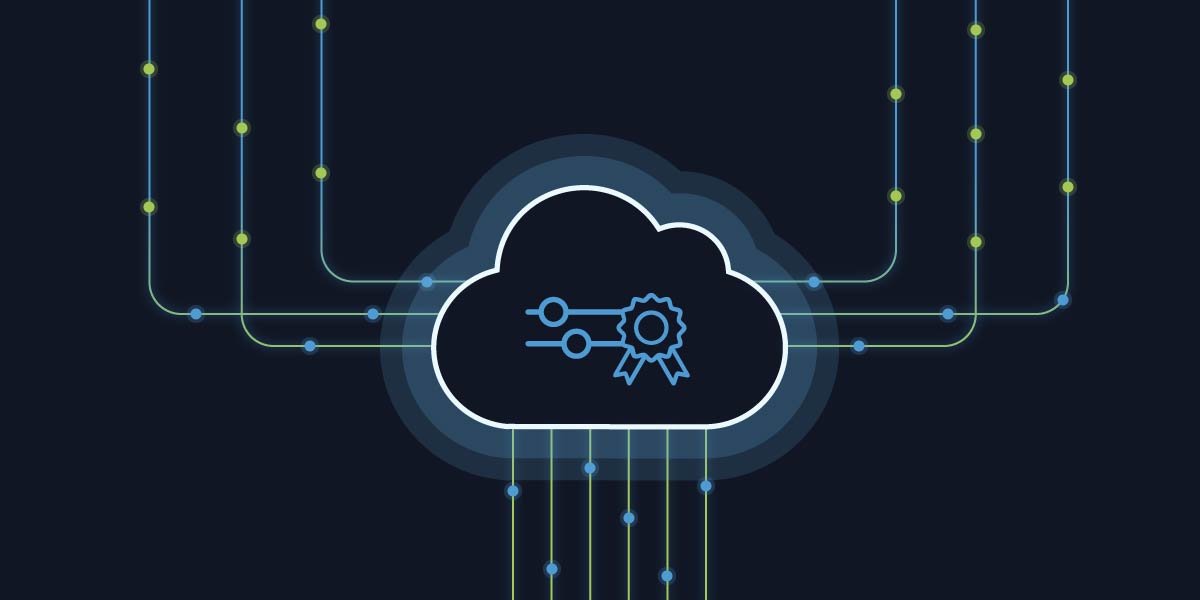One of the primary reasons that enterprises have been able to transition to cloud infrastructure so quickly is due to automation. In fact, automation is the foundation of any cloud platform, enabling an enterprise to quickly and easily spin up as much new compute, storage, or networking services as they need without requiring any manual interaction.
Enterprises have accomplished exactly that – they’ve stood up infrastructure across multiple cloud-platforms and adopted many different cloud services into their IT ecosystem. Many times, cloud infrastructure was implemented without any insight or oversight from the network team. Initially, cloud networking was seen as very simple and perhaps somewhat insignificant, but today, cloud networking has grown larger and more complex. This evolution has required networking teams to step in to manage cloud as well as on-prem networks.
The evolution started out slow as initially, network teams were not given a seat at the cloud table, and maybe they didn’t really want to be there at all. But it’s become apparent to many that there’s a lack of compliance in cloud infrastructure, and because of the danger this poses, their seat is now firmly established. Network teams are inheriting a cloud network infrastructure that was built with little or no compliance oversight at the time of deployment, because getting it up and working immediately was the overarching priority – possibly followed by the idea that “if something is wrong, it will be easy for someone to fix later.”
For enterprise network teams: the “someone” is them and “later” is now.
Network teams are now tasked with identifying all the cloud network services that comprise “the network” and bring configuration order to the cloud chaos. This is a very difficult mountain for them to climb, for a number of reasons.
Let’s take a look at what’s needed for network teams bring control to the chaos in order to maintain cloud compliance.
The Top Four Challenges to Bringing Control to the Cloud Chaos
Existing Cloud Infrastructure Must be Brought into Compliance
Enterprises are using multiple cloud platforms to deploy apps and services, and every cloud platform has its own unique portfolio of network and infrastructure services. While many of them may share similarities, they will all have different features and functionalities, and they will have differing ways that they are configured. An AWS VPC and an Azure VNet share a similar functionality, but they are two different network services on two different platforms, and each of them are configured in two different ways. If you studied the configuration of these cloud services side-by-side, you’d recognize how different they are, yet network teams must understand how each of these cloud network services are configured and build compliance templates for them. This has to be done for every VPC in use in AWS, for every VNet in Azure and any other service that’s in use on any cloud platform – that’s a monumental task.
Existing Cloud Infrastructure Must Remain in Compliance
Once the cloud network is in a state of compliance, it must remain compliant. This means that network teams must have an automated process of scheduled compliance checks against the cloud infrastructure and an automated method of dealing with network elements that are no longer compliant. Without automated remediation network teams will end up creating a larger backlog of manual work, which is something they need to avoid. As many cloud platforms have some method of sending notifications of configuration changes, these automations should also be integrated with these notification services to deliver event-driven, closed-loop compliance and remediation services.
New Cloud Infrastructure Requests Must be Checked for Compliance Before Deployment
If the existing cloud infrastructure is in a state of continued compliance, network teams must also implement solutions to ensure that any new cloud network infrastructure is in compliance from the moment it is deployed. What is required to do so is a method of validating proposed infrastructure changes before they are ever deployed. This is a preventative measure used in an automation that can drastically reduce the number of compliance issues that are detected in compliance reports, and this becomes critical if automations become part of a self-service solution, where users outside of the network team can request infrastructure. The requested infrastructure can have its configuration validated and vetted before its committed in the cloud platform, ensuring that it this new infrastructure is always compliant.
Solutions from the Previous Network Era are Not Enough, Modern Solutions Must be Adopted
Existing network compliance tools that work on-prem don’t work with today’s multi-cloud platforms. Cloud-based network services are deployed and managed using different techniques, and the odds are that your current network compliance solution is a tool of the past networking era and can’t integrate with the APIs from different cloud platforms and services. This leaves network teams with a solution gap that they will need to fill. Teams must begin to adopt more modern solutions that can manage hybrid infrastructure.
A Modern Solution to Network & Cloud Compliance & Automation with Itential’s Automation Platform
The Itential Automation Platform is a modern compliance and automation solution that works across traditional on-prem network and multiple cloud platforms. Itential’s solution was purpose-built to make it easy for teams to integrate with any network system or cloud platform through a simple process of onboarding their APIs, which is why our platform can support compliance and automation throughout the entire network, whether it’s managed through CLI or API techniques.
To learn more about how Itential helps our customers ensure their hybrid infrastructure is always compliant, watch one of my on-demand webinars, “Modern Network Compliance: Achieving Compliance in a Hybrid, Multi-Cloud World.” In this webinar, you’ll see firsthand how Itential Configuration Manager helps achieve on-prem and cloud network compliance.






